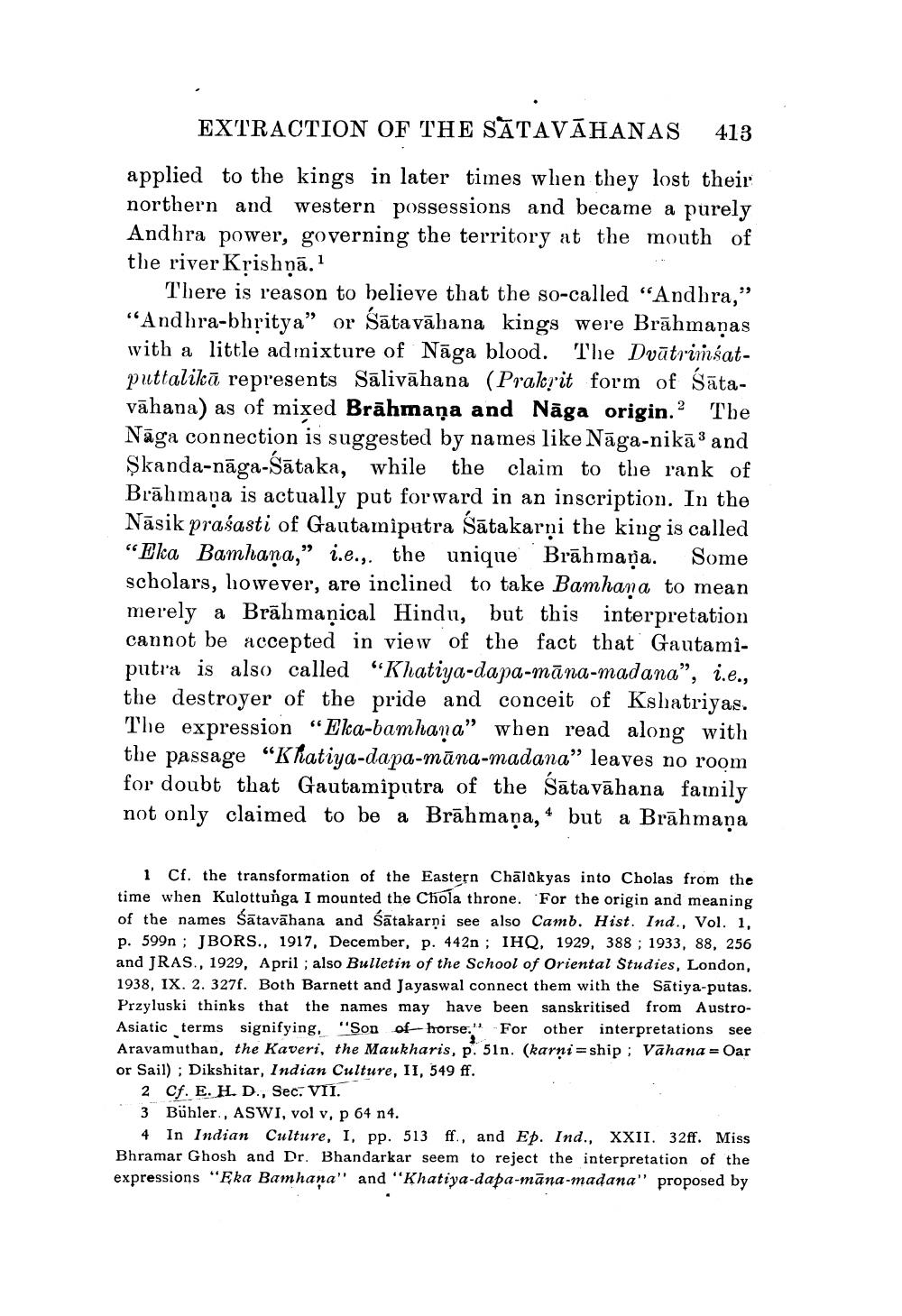________________
EXTRACTION OF THE SATAVAHANAS
413
applied to the kings in later times when they lost their northern and western possessions and became a purely Andhra power, governing the territory at the mouth of the river Krishņā.1
There is reason to believe that the so-called "Andhra," "Andhra-bhritya" or Satavahana kings were Brāhmaṇas with a little admixture of Naga blood. The Dvātrimsatputtalika represents Salivahana (Prakrit form of Satavahana) as of mixed Brāhmaṇa and Naga origin.2 The Naga connection is suggested by names like Naga-nikā3 and Skanda-naga-Sataka, while the claim to the rank of Brahmana is actually put forward in an inscription. In the Nasik prasasti of Gautamiputra Satakarni the king is called "Eka Bamhana," i.e.,. the unique Brahmana. Some scholars, however, are inclined to take Bamhana to mean merely a Brahmaṇical Hindu, but this interpretation cannot be accepted in view of the fact that Gautamiputra is also called "Khatiya-dapa-mana-madana", i.e., the destroyer of the pride and conceit of Kshatriyas. The expression "Eka-bamhana" when read along with the passage "Khatiya-dapa-mana-madana" leaves no room for doubt that Gautamiputra of the Satavahana family not only claimed to be a Brāhmaṇa, but a Brāhmaṇa
1 Cf. the transformation of the Eastern Chalukyas into Cholas from the time when Kulottunga I mounted the Chola throne. For the origin and meaning of the names Satavahana and Satakarni see also Camb. Hist. Ind., Vol. 1, p. 599n; JBORS., 1917, December, p. 442n; IHQ, 1929, 388; 1933, 88, 256 and JRAS., 1929, April; also Bulletin of the School of Oriental Studies, London, 1938, IX. 2. 327f. Both Barnett and Jayaswal connect them with the Satiya-putas. Przyluski thinks that the names may have been sanskritised from AustroAsiatic terms signifying, "Son of horse." For other interpretations see Aravamuthan, the Kaveri, the Maukharis, p. 51n. (karni ship; Vahana = Oar or Sail); Dikshitar, Indian Culture, II, 549 ff.
2 Cf. E. H. D., Sec. VII.
3 Bühler., ASWI, vol v, p 64 n4.
4 In Indian Culture, I, pp. 513 ff., and Ep. Ind., XXII. 32ff. Miss Bhramar Ghosh and Dr. Bhandarkar seem to reject the interpretation of the expressions "Eka Bamhana" and "Khatiya-dapa-mana-madana" proposed by




